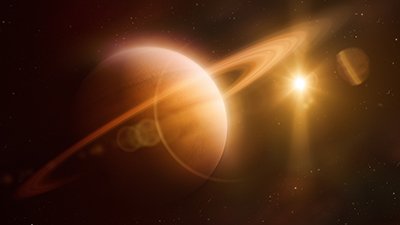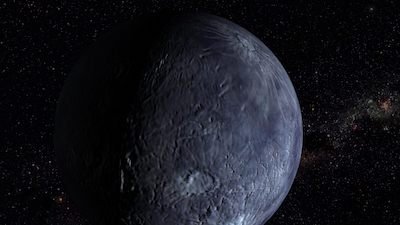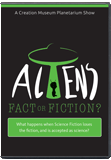Planets Near and Far
Two recent studies of astronomical interest have been in the news. Both are about planets: one near (Saturn) and one far (K2-18b).
Saturn (and Its Rings)
The most commonly invoked candidates for destruction to form Saturn’s rings are its natural satellites, or moons.
I recently published an article in Answers in Genesis’ Answers Research Journal (ARJ) evaluating various astronomical young-age indicators that creationists have used over the years. One of the ones I discussed is the existence of planetary rings. Everyone knows that Saturn has a prominent ring system, but the other three Jovian planets have rings too, though they can’t be readily seen from earth. There are at least five mechanisms that destroy planetary rings. Given that planetary rings are fragile and contain relatively little mass, it has been known for some time that ring systems have relatively short lifetimes, at least compared to the supposed 4.5 billion-year age of the solar system. That Saturn’s rings are young doesn’t necessarily mean that Saturn itself or the rest of the solar system is young. Saturn and the rest of the solar system could be old, and Saturn could have acquired its rings very recently. How could a ring system form? The usual response is that Saturn’s strong tides disrupted a body that came too close to Saturn. Ditto for the other three ring systems. But this seems like an unlikely scenario. The most commonly invoked candidates for destruction to form Saturn’s rings are its natural satellites, or moons. But these bodies have reasonably stable orbits, and it would require multiple interactions to bring them so close to Saturn for tidal destruction to occur. Each of those interactions are exceedingly rare. Over the past 4 ½ billion years, this must have happened multiple times, yet Saturn has many satellites remaining. And what is the probability that all four Jovian planets recently underwent this process if the solar system is billions of years old?
As part of my conclusion of this possible young-age indicator, I wrote:
This argument for recent origin warrants continued monitoring and response as new information and models are proposed.
Well, we didn’t have to wait long. Even before my ARJ article was posted, a new study suggested that the rings of Saturn may be far older than generally thought. There are different ways to evaluate the age of Saturn’s rings, and each one involves some assumptions. This new study concentrated on the rate at which dusty and organic material are removed from Saturn’s rings. With a few different assumptions, the researchers concluded that Saturn’s rings could be billions of years old.
How well will this new result be received by other astronomers? It’s too early to tell. There has been much evidence amassed to the contrary, that Saturn’s rings are young, at most only millions of years old (and possibly far less). New studies that challenge the status quo typically don’t fare very well. On the other hand, most astronomers are committed to the solar system being billions of years old, and the low probability of tidal disruption events producing rings does call this into question. Therefore, many astronomers may welcome this new approach. As I said, we need to continue monitoring these sorts of developments as they arise.
K2-18b
The exoplanet K2-18b was discovered by the Kepler space telescope in 2015. This planet orbits the red dwarf star K2-18, located 124 light years from earth. K2-18b has an orbital radius 14% of the earth’s distance from the sun, taking nearly 33 days to complete one orbit. This places K2-18b in the habitable zone of its star, the region where an orbiting planet with the right atmosphere may have a surface temperature that could support life. The habitable zone of the star K2-18 is much closer to it than the sun’s habitable zone is to the sun because K2-18 is much fainter than the sun. K2-18b is nearly three times larger than earth and has about nine times more mass than the earth. This size qualifies K2-18b as a super-earth. Being close to the earth’s size and being in its star’s habitable zone, K2-18b has gathered much attention for those looking for life elsewhere in the universe. That excitement intensified with the recent detection of water vapor in the atmosphere of K2-18b. The paper went on to conclude the likelihood of water-droplet clouds in the atmosphere of the planet, as well as the possibility of precipitation of water (rain) on K2-18b.
So, does this mean that K2-18b is a likely habitat for life? Interestingly, the new paper didn’t make that suggestion.
So, does this mean that K2-18b is a likely habitat for life? Interestingly, the new paper didn’t make that suggestion. In fact, the emphasis of the paper was on the novelty of the water detection in the atmosphere of an exoplanet, with the ramification of possible similar detections on more promising planets. Why the pessimism about the possibility of life on K2-18b? The researchers modeled the atmosphere of K2-18b. They concluded that its atmosphere is heavily clouded. Furthermore, that atmosphere likely is dominated by hydrogen and helium. This is very different from the nitrogen-based atmosphere of earth. The atmosphere of K2-18b probably has no free oxygen. Then there is the planet itself. The density of K2-18b is only about 2.4 gm/cm3, far less than the 5.5 gm/cm3 of the earth. This means that K2-18b is lacking heavier elements. It is conceivable that K2-18b may have abundant liquid oceans. But is it more likely that K2-18b is dominated by hydrogen and helium in considerable depth, as are the Jovian planets in the solar system.
Then there are issues with the orbit of K2-18b and with the star it orbits. The eccentricity of the orbit is 0.20±0.08. This is more eccentric than any planetary orbit in the solar system, resulting in large changes in how far the planet is from its star. Even if we take the lower limit of the orbital eccentricity, the distance of the planet from its star varies by 27%, resulting in a difference in heating radiation of 62%. Such wide swings in temperature are not good for the possibility of life on K2-18b. K2-18 is a red dwarf, and red dwarfs are notoriously variable. Observations of K2-18 thus far indicate that it is unusually stable for a red dwarf, varying in brightness by only 0.7%. However, we have been observing K2-18 for just a few years. Does this star vary this little on a much longer timescale? No one knows. More problematic is that red dwarf variability is driven by star spots and chromospheric activity. These produce huge magnetic storms that are very harmful to life. Time will tell whether K2-18 produces this kind of activity. At any rate, no one who understands these sorts of things is seriously suggesting that life exists on K2-18b.
Sensational News?
Unfortunately, press accounts of this study were much more optimistic about the possibility of life on K2-18b. This is not new, because a planet that might harbor life is news, but a planet without life isn’t; consequently, the press frequently sensationalizes things. Despite the discovery of nearly 4,000 exoplanets over the past 25 years, there has yet to be a truly early earth-like planet among them. But, as with Saturn’s rings, we’ll continue to monitor the situation.
Recommended Resources

Answers in Genesis is an apologetics ministry, dedicated to helping Christians defend their faith and proclaim the good news of Jesus Christ.
- Customer Service 800.778.3390
- Available Monday–Friday | 9 AM–5 PM ET
- © 2025 Answers in Genesis





